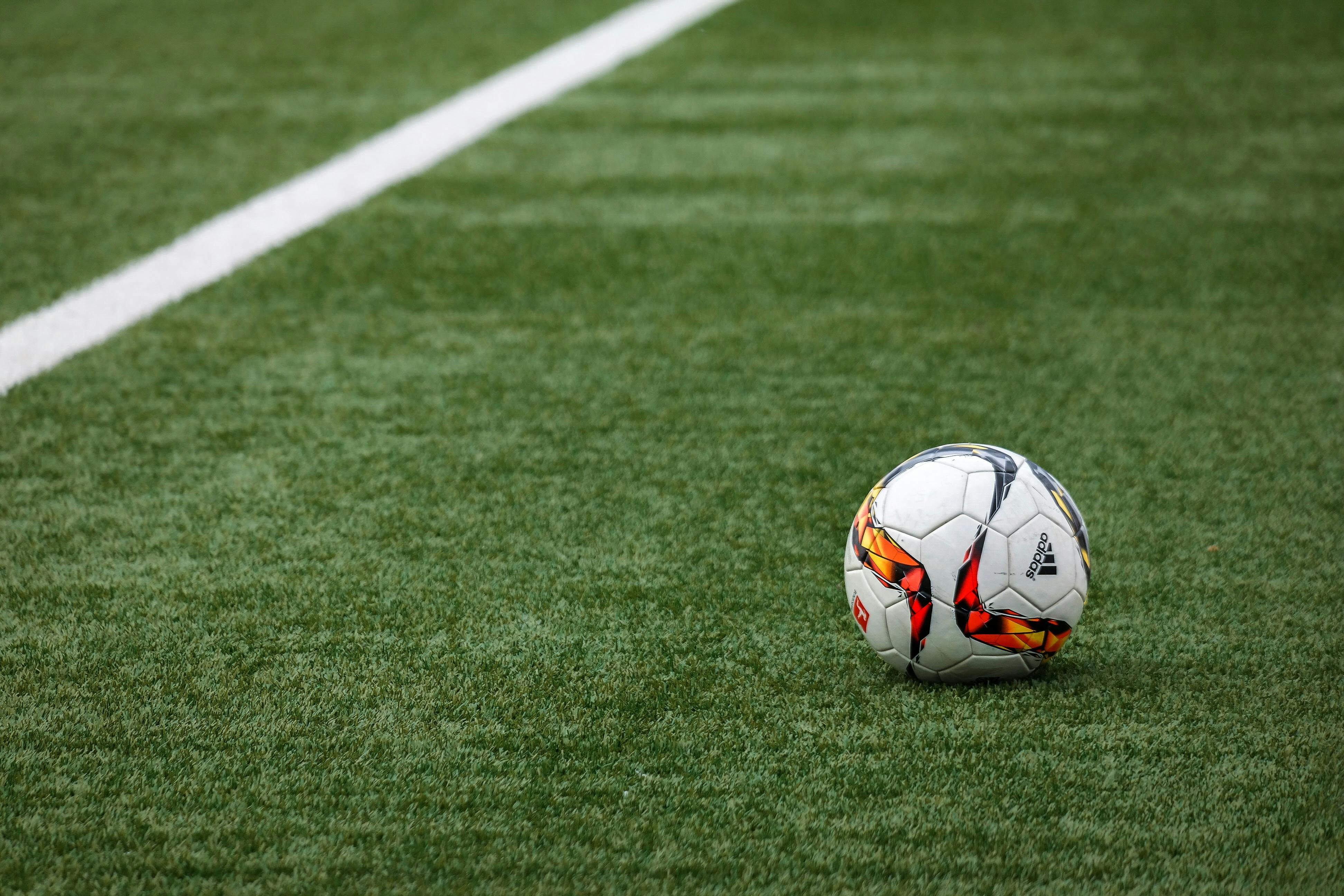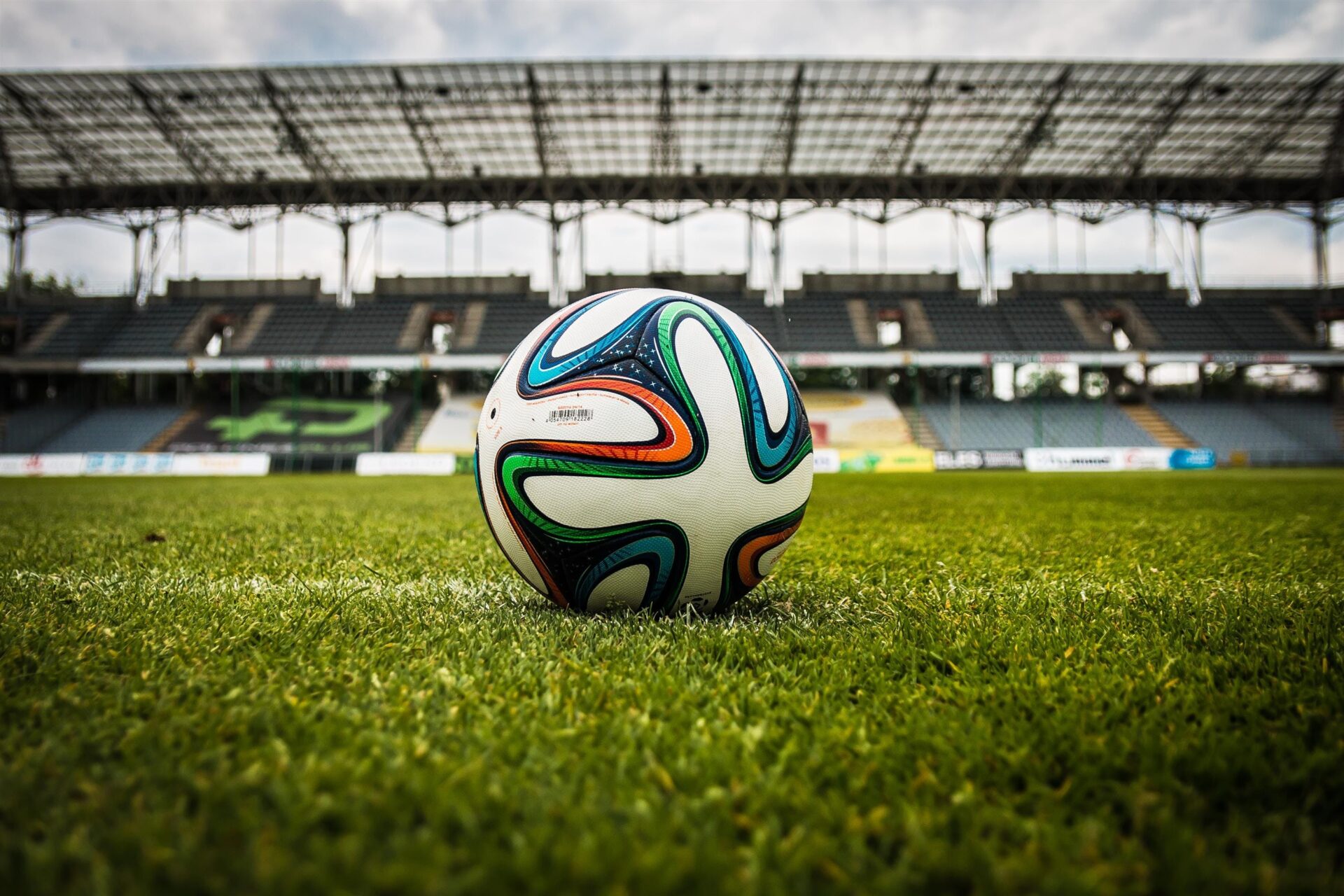Soccer is one of the most popular sports in the world and it is not surprising that many players strive to perfect their skills. One of the skills that all soccer players need to master is how to curve the ball. Curving the ball in soccer can be a tricky skill, but with practice and dedication, it can be done. In this article, we will discuss how to curve the ball in soccer by focusing on technique, body position, spin and power. With these tips, you’ll be able to master this skill and be able to make those beautiful curved shots.In order to curve the ball in soccer, the player must strike the ball in such a way that it’s spinning. The most common way to do this is by striking the middle or outside of the ball with the inside of your foot. The amount of spin and the direction of the curve depend on where you strike the ball and how it curves off your foot. Make sure to keep your ankle locked and your toes pointing down when striking the ball in order to get maximum spin. Additionally, be sure to follow through with your kick, as this will help you produce more power and control over where you want the ball to go.
Understanding the Mechanics of Curve on a Soccer Ball
The curve on a soccer ball is an essential part of the game, allowing players to bend and swerve their shots with precision. But how does this phenomenon occur? The answer lies in the science of aerodynamics and the physics of spinning objects. Understanding these concepts can help soccer players both new and experienced gain a better understanding of how to control the ball and achieve greater accuracy with their shots.
In order for a soccer ball to curve, it must have spin. When a player kicks the ball, the laces on their boot cause uneven pressure on the surface of the ball, creating spin in one direction or another. This spin causes air pressure to build up on one side of the ball while decreasing on the other side. This imbalance in air pressure causes turbulent airflow, which causes turbulence around the circumference of the ball, causing it to move in an arced motion.
This phenomenon is known as “Magnus effect” after German physicist Heinrich Gustav Magnus who first studied it in 1853. The Magnus effect is most pronounced when there is no wind present, as this eliminates any other forces that might affect its trajectory. This means that even without wind or other environmental factors present, a soccer player can still bend and shape their shots by simply applying spin to them.
The amount of curve or “bend” that a soccer ball will have depends on several factors such as speed, angle and spin rate applied by the player’s kick. Generally speaking, faster speeds create more pronounced curves while slower speeds create less drastic curves. In addition to speed, angle also plays an important role in creating curves; kicking at an angle increases lift which amplifies any curves created by spin rate or speed – making for more powerful shots that bend further from their original trajectory.
Finally, spin rate plays an important role in determining how much curve will be applied to a shot – higher rates tend to create more extreme curves while lower rates tend to create less dramatic curves. It should be noted however that too much spin can cause a curved shot to lose its accuracy by veering off course; thus it is important for players to experiment with different spins and speeds until they find what works best for them and their shot type .
In conclusion, understanding how aerodynamics and physics interact with each other can help soccer players gain greater control over their shots; from controlling curvature through proper application of speed and spin rate to maximizing accuracy with appropriate angles , mastering these concepts can make all the difference when it comes time for game play .
Mastering Your Technique to Kick and Curve the Ball
Kicking and curving a ball is a skill that requires practice and proper technique. To master this skill, there are some important steps you need to follow. First, learn the basic technique. You should be able to kick the ball straight and control its direction with your feet. Next, practice curving the ball with your foot. This can be done by angling your feet in different directions while kicking the ball. Once you have mastered these techniques, work on perfecting your accuracy. Practice kicking the ball towards a target and make sure it lands in the right spot.
Developing Your Strength
In order to increase your power when kicking or curving a ball, you need to work on developing your strength and stamina. Doing exercises such as squats, lunges and other leg strengthening exercises can help build up the muscles in your legs for more accurate kicks or curves. Additionally, practicing sprints and other cardiovascular exercises can help you increase your endurance so you can keep up with play for longer periods of time without getting tired quickly.
Improving Your Accuracy
Having a good technique is important but it’s also important to develop accuracy when kicking or curving a ball. To do this, practice by aiming for targets like cones or goals while also focusing on keeping your body steady and balanced during the kick or curve. You could also set up drills to practice different types of shots like long-range strikes or quick snap shots from close distances. By honing in on these skills, you’ll be able to accurately kick or curve a ball with confidence during games or practices.
Once you’ve practiced these techniques, it’s time to take it up a notch by playing against opponents who will challenge you even more than when practicing alone. This will give you an opportunity to put all of the skills and techniques that you have learned into action while pushing yourself even further. With enough dedication and hard work, you will soon become an expert at mastering your technique to kick and curve the ball!
Developing Strength and Accuracy for Curving the Ball in Soccer
Playing soccer requires you to have a wide range of skills at your disposal. One of these skills is curving the ball. This skill requires both strength and accuracy. Without both, it is difficult to get the ball to go where you want it to go. As such, players should focus on developing these two areas to improve their game.
When it comes to developing strength for curving the ball, players should focus on building their leg muscles. This can be done by doing exercises such as squats, lunges and calf raises. A stronger leg will help generate more power when shooting or passing the ball. The more power you can generate, the better chance you have of getting the ball to curve where you want it to go.
Accuracy also plays an important role in curving the ball. Players should focus on practicing their aim and accuracy with drills such as shooting at specific targets or passing at a certain angle. This will help them become more accurate when trying to curve the ball in a game situation. Practicing regularly will help them develop better accuracy over time.
In conclusion, players should focus on developing both strength and accuracy when it comes to curving the ball in soccer. Building strength in their legs will help generate more power while practicing drills will help them develop better accuracy when shooting or passing the ball. With enough practice and dedication, players can master this skill and become a threat with their curved shots!
Knowing When to Use Curves in Soccer
Curving the ball is an important skill in soccer and can be used to create greater opportunities for scoring. It can also be used to make it harder for defenders to intercept the ball. Knowing when and how to use curves is an essential part of mastering the game.
In order for a player to be successful at curving the ball, they must first understand what causes it. The spin on the ball is what causes it to curve when kicked. This spin is created by the foot’s contact with the ball and the angle at which it strikes it. The more spin, the more curvature will occur in the ball’s flight path.
The most important factor in determining when to use curves is knowing where your opponents are on the field. If you know where they are, you can use curves to your advantage by kicking away from them, making it more difficult for them to intercept or block your shot. This technique can also create more space between you and them, allowing you more time and space with which to maneuver.
In addition, using curves can help you surprise your opponents by changing up your playing style. For example, if a defender expects you to pass or shoot straight ahead, a curved kick may take them off guard and give you an advantage over them. This can give you a better chance of scoring or setting up an opportunity for another player on your team.
Finally, practice makes perfect when it comes to mastering curves in soccer. Spend some time practicing different types of kicks with varying amounts of spin so that you become comfortable with using both left-footed and right-footed kicks as well as inside of foot and outside of foot kicks with different levels of spin on them. With enough practice, curving the ball will become second nature and you will be able to use this skill effectively during games against opponents who may not be expecting it!

Drilling for Curving the Ball in Soccer
Drilling is an important part of learning how to curve the ball in soccer. The key to successfully curving the ball is to understand how to change the trajectory of your kick, and this can only be done with practice and dedication. There are several drills that can help players hone their skills and become more proficient at curving a ball.
One drill that can help players learn how to curve a ball is called “Passing Through Cones”. This drill requires players to set up four cones in a square formation, spaced about two yards apart. The player then starts from one side of the square and passes the ball around each cone, attempting to keep it in between them while also curving it through the air. This drill helps players understand how different angles and trajectories will affect their kick, allowing them to make adjustments as needed.
Another useful drill for learning how to curve a ball is called “Shadow Kicking”. In this drill, players stand facing a wall and kick a soccer ball toward it, aiming at different points along its surface while also trying to curve it around obstacles such as chairs or cones placed in their way. This helps players learn how different angles and trajectories affect their kick, making it easier for them to adjust according to what they see on the field during a game.
Finally, there is “The Wall Drill” which involves setting up several walls or obstacles at various distances from each other in an open area. Players then take turns kicking balls between each wall while attempting to curve them around obstacles as they go. This drill helps players understand how different angles and trajectories will affect their kick, as well as how much power they need to use when kicking the ball around obstacles.
While practice drills are essential for mastering any skill, it’s important not to forget about technique when learning how to curve a soccer ball. Proper technique is essential for consistently achieving accurate kicks with good power behind them – something that drilling alone cannot teach you! Make sure that you take time out of your practice sessions for a few technical exercises such as passing against resistance bands or focusing on keeping your body still during the kick – both of which will help you master curving the soccer ball with ease!
Take Advantage of Spin on the Ball for Better Curve
Spin on the ball can be a great tool for pitchers to use when they are trying to generate more curve and movement on their pitches. When a pitcher applies spin to his or her pitch, it causes the ball to move in different directions, making it harder for batters to predict its trajectory. With proper spin, a pitcher can use this technique to generate more break and movement on their pitches. This can be especially effective when the pitcher is throwing breaking balls such as curves and sliders.
The most important thing when applying spin is to make sure that it is applied correctly and consistently. If a pitcher is not able to apply consistent spin, then it will not be effective in creating more movement and break on the ball. It is important for pitchers to practice applying spin during their throwing sessions so that they can build up consistency with this technique.
Another key factor when applying spin on the ball is the timing of release. When a pitcher releases the ball at an optimal time during his or her delivery, it helps create more break and movement on the pitch. If a pitcher releases too late or too early, then the pitch will not have as much break or movement as desired.
Finally, focusing on where the pitcher wants the pitch to end up also helps create better break and curve with spin. If a pitcher focuses on where he or she wants the pitch to end up instead of just throwing without direction, then it can help create more break and curve with each pitch thrown.
By taking advantage of spin on the ball, pitchers can generate more break and movement on their pitches which can make them much harder for batters to hit. With proper technique and focus, pitchers can learn how to apply spin correctly so they can get maximum benefit from this technique in order maximize their effectiveness as a pitcher.
Maintain Balance While Kicking for a Better Curve in Soccer
Kicking the ball with precise curve and accuracy is an essential skill for any soccer player. It’s important for a player to maintain balance while kicking the ball to achieve this. Proper posture and body alignment can help ensure that you get a good strike on the ball with a consistent curve. The following tips can help you to maintain balance while kicking for a better curve in soccer:
1. Start by standing with feet shoulder-width apart, knees slightly bent, and your hips slightly lowered. This allows you to create power and stability as you kick the ball.
2. Make sure your supporting foot is placed firmly on the ground so that you have enough stability when you are about to kick the ball.
3. As you start to kick, rotate your hips inwards towards the direction of the target before bringing your kicking leg forward. This will give you more power and control over your shot.
4. At the same time, keep your eyes focused on the target so that you can aim accurately at it when kicking the ball.
5. Make sure that your follow through is straight and consistent when releasing the ball from your foot after making contact with it. This will give it more spin and will help create better accuracy with your shot.
6. Finally, practice regularly in order to master these techniques and be able to apply them consistently during matches or training sessions. With enough practice, you should be able to get a good curve on each of your shots and increase their accuracy as well!

Conclusion
Curving the ball in soccer is an art form. It requires both practice and technique to become proficient at it. Dribbling, cutting and shooting are all part of the skill set that is necessary to curve the ball with success. The tips outlined in this article will help you get started on your journey towards mastering this skill and making sure you have a competitive edge over your opponents when it comes to free kicks, corner kicks, and any other situation that requires a well-placed curved shot.
Practice makes perfect; so be sure to set aside some time each day to focus on curving the ball correctly. With enough practice and dedication, you should be able to master this skill in no time!




